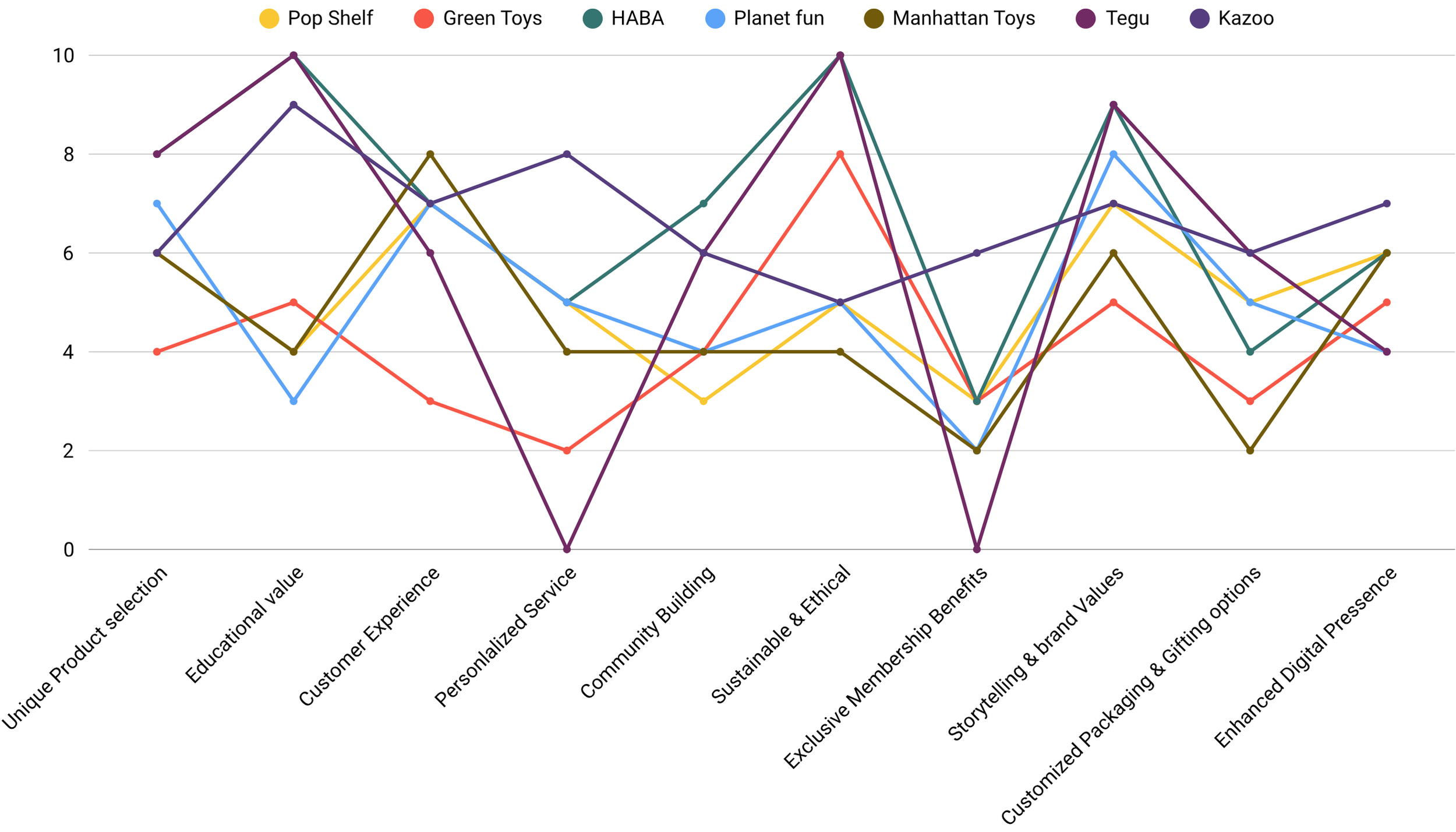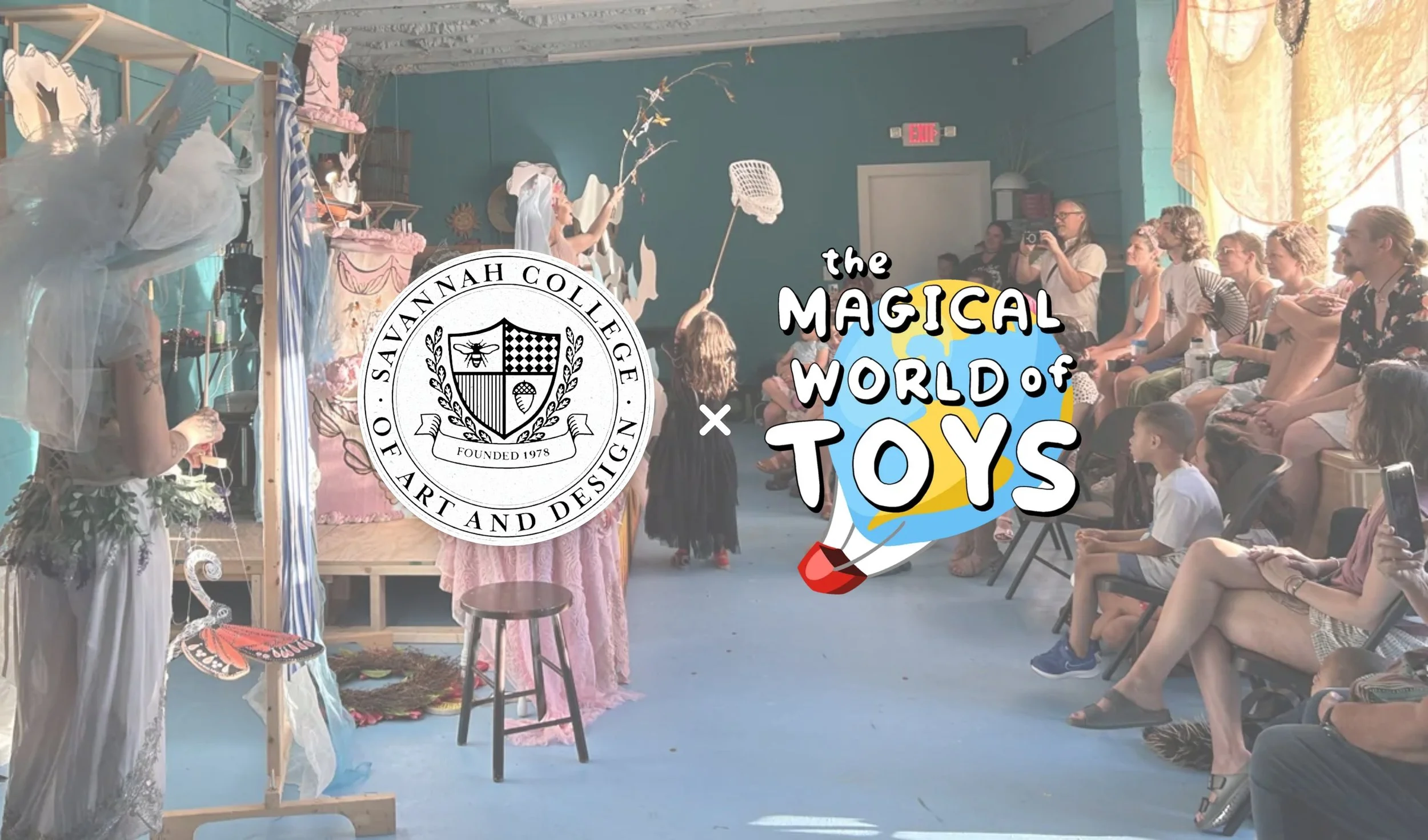
My Role
UX researcher, Design Strategist
Research, conducting workshops, data analysis and design strategy, brand identity and presentations
Goal
The goal of the project is to increase foot traffic and brand visibility for the store while enhancing customer engagement and creating a more inclusive, community-focused shopping experience for families in Savannah.
Impact of the Project
It helps bridge the gap between innovation and user expectations, leading to more empowering solutions.
Duration
10 weeks
Tools
Solution
This project explores Generation X’s technology use, identifying their needs for user-centered design. Through observations, interviews, and sensory workshops, we found a preference for balanced, secure, and practical technology that enhances digital well-being. Using the Anatomy of Experience Framework, we developed actionable design strategies to create intuitive, empowering experiences.
Final Deliverable
Pitch Presentation with proposed Design Strategies and budget. Poster and Process Book
About
SCAD x The Magical World of Toys Collaboration:
In collaboration with The Magical World of Toys, SCAD students in the Strategic Design Management class worked on redefining the store's brand and customer experience. The project aimed to elevate the store's visibility and engagement through innovative strategies, including digital marketing, customer loyalty, and operational improvements.
The Magical World of Toys and Dante, the Owner:
The Magical World of Toys is a beloved, family-oriented toy store in Savannah, known for its unique selection of toys and commitment to creating an immersive shopping experience. Dante, the passionate owner, strives to build a store that not only provides high-quality products but also fosters a sense of community, aiming to create a space where both children and parents feel connected and valued.
The Big Question
How can we elevate the Magical World of Toys presence and brand identity to increase footfall, enhance the customer experience, and increase sales?
The Design Process
PHASE 1
Secondary Research
SWOT
PESTEL
Identifying Needs
Competitor Analysis
Design Thinking
The Big Question?
This four-phase design process worked effectively because it combined deep research with collaborative workshops to align closely with the client’s needs. Starting with structured analysis and moving into
co-creation, it allowed for shared insights, strategic clarity, and practical, high-impact solutions like a social media calendar and loyalty program.
The client felt heard, engaged, and confident in the outcomes.
PHASE 2
Brand Diagnostic Workshop
Dreams & Nightmares
Brand DNA
Gains, Pains, Questions & Ideas
2X2 Time vs. Impact Map
Competitor Landscape
Competitor Analysis
Strategic Action Plan
PHASE 3
Co-creation Workshop
Divergent Thinking
TRIZ(Theory of Inventive Problem Solving)
15% Solutions
Lego Serious Play
PHASE 4
Solutions
Social Media Calendar
Loyalty Program
Automation
Blue Ocean Strategy
We conducted research on 7 competitors and rated them across 10 key attributes relevant to enhancing the Magical World of Toys.
Each competitor was scored from 1 to 10 for each attribute, helping us identify strengths and gaps in the market, as well as areas where the Magical World of Toys could stand out and drive growth.
This research provides valuable insights for strategizing ways to improve sales and brand positioning.
Brand Diagnostic Workshop
Problems We Faced:
Difficulty aligning diverse ideas into a cohesive workshop structure
Time constraints in preparing activities and materials
Scheduling conflicts among team members
Uncertainty about meeting client expectations
Conducting the brand diagnostic workshop with Dante for The Magical World of Toys was an engaging and insightful experience held in person during our class. Throughout the workshop, we participated in various activities designed to assess the brand’s current positioning and identify opportunities for growth.
These activities encouraged creative thinking and collaboration, allowing us to explore the brand’s identity and market landscape deeply.
How We Overcame Them:
Held regular check-ins to ensure alignment and progress
Delegated tasks based on individual strengths
Maintained open and honest communication within the team
Created contingency plans and adjusted timelines as needed
Key Learnings:
Early planning and clear role distribution are essential
Flexibility and adaptability help navigate unexpected changes
Collaboration and trust lead to more creative and effective outcomes
Constructive feedback strengthens both the process and the final delivery
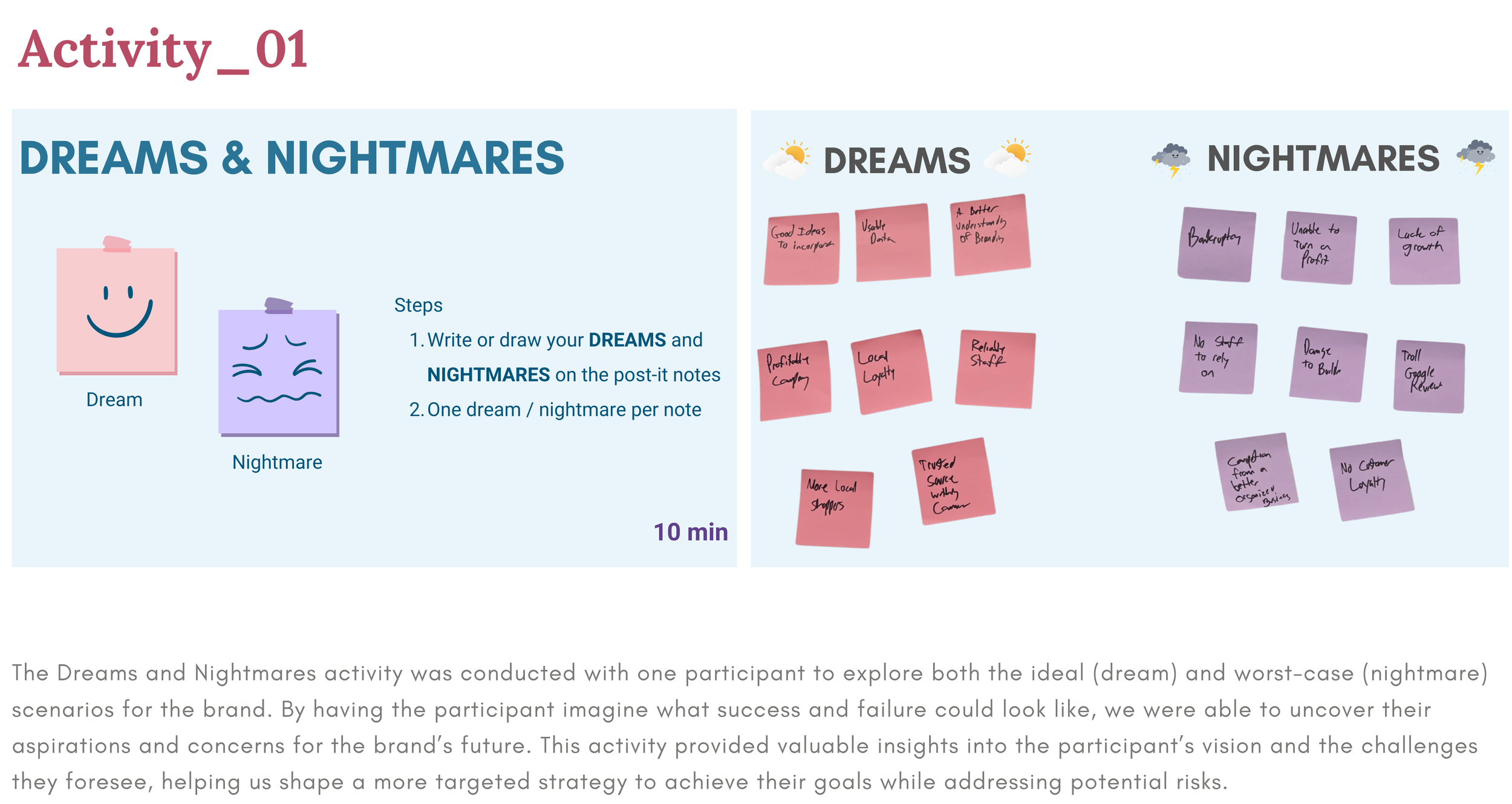
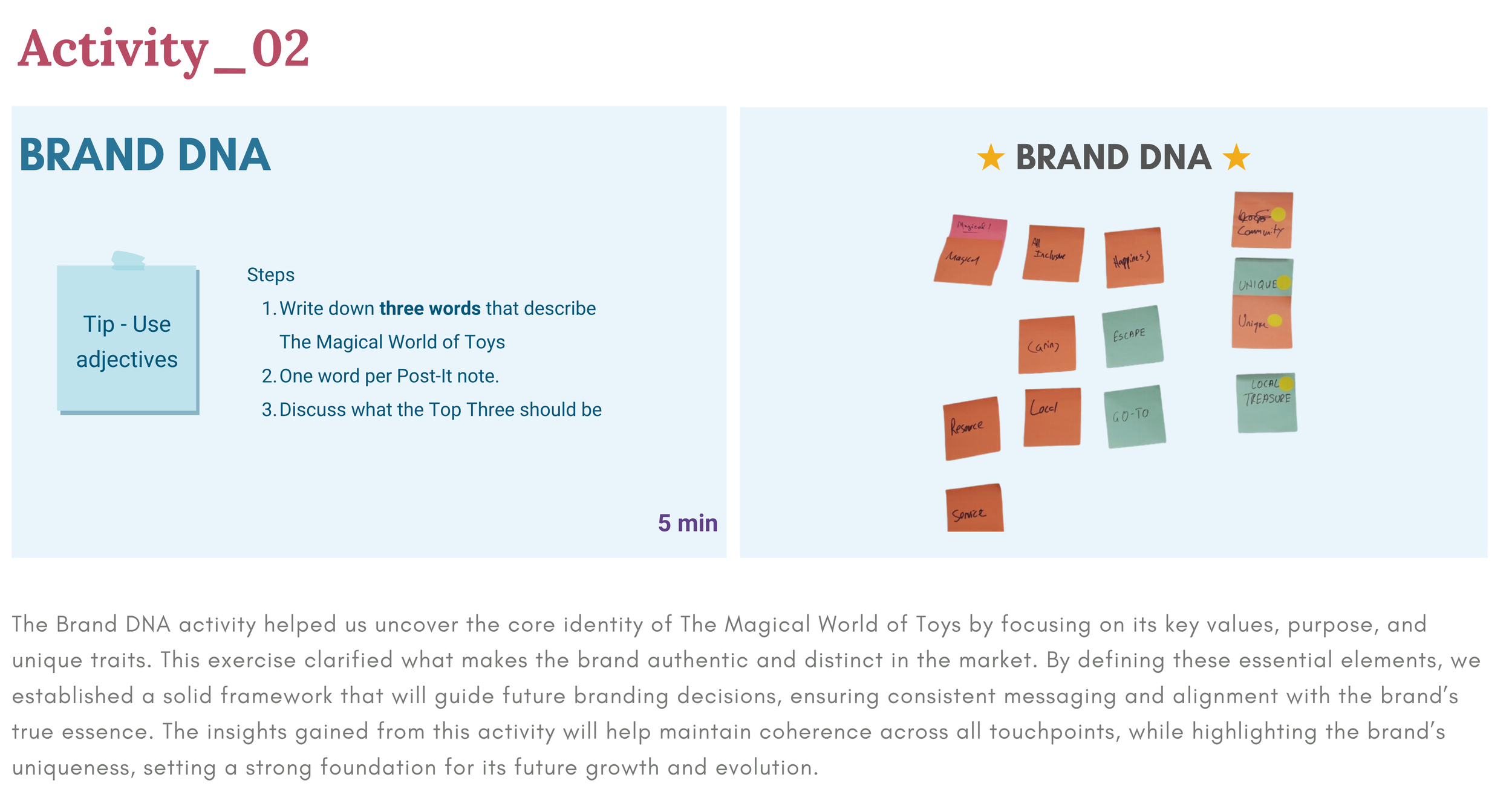


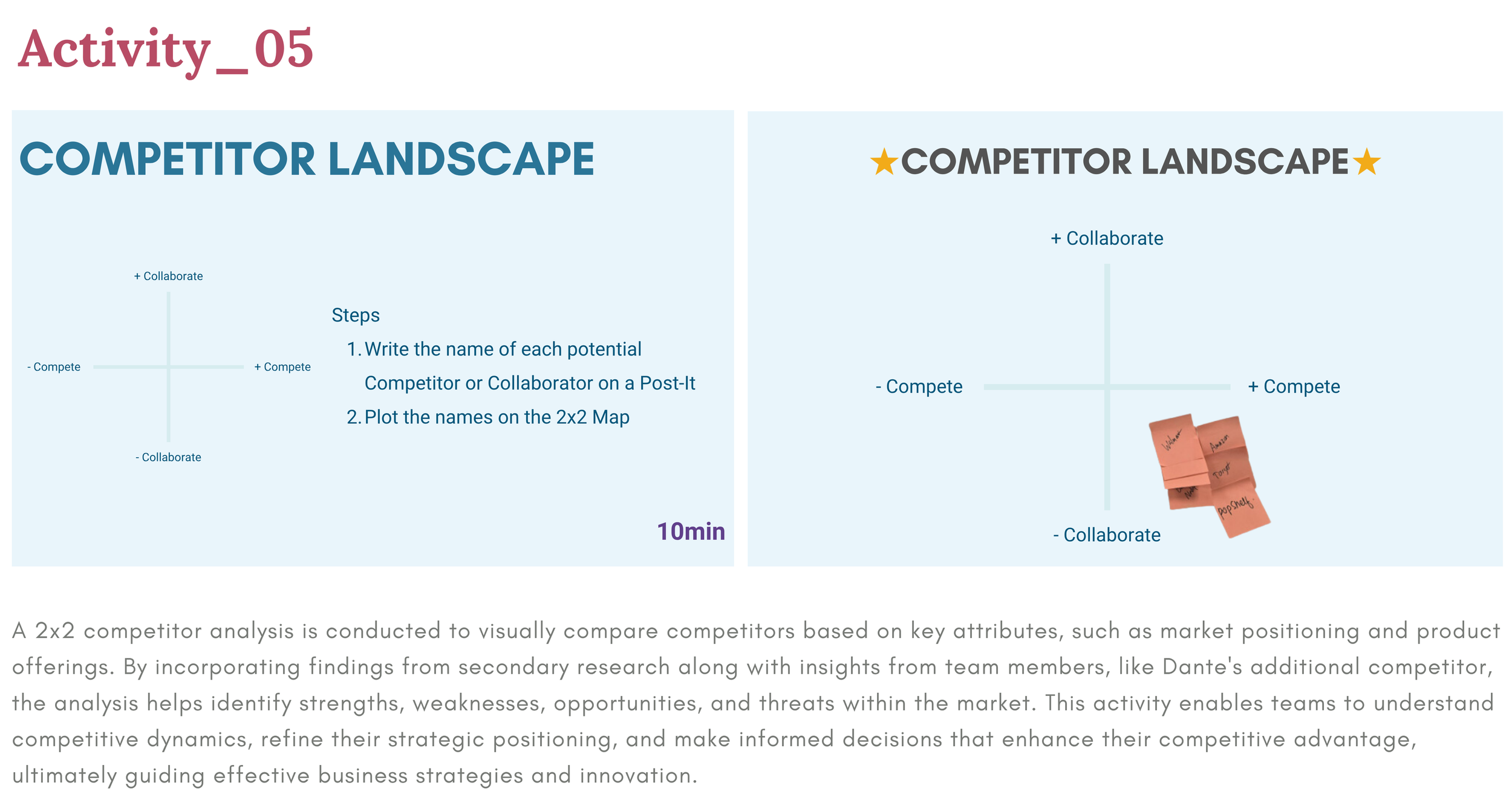


Co-creation Workshop
Problems We Faced:
Limited Perspectives: With only one participant, we initially faced a challenge in generating a wide range of ideas and viewpoints.
Engagement Fatigue: A solo session ran the risk of the participant feeling overwhelmed or losing momentum through multiple activities.
Tool Adaptation: Some of the planned group-based activities like TRIZ and LEGO Serious Play required thoughtful modification to remain meaningful in an individual setting.
For The Magical World of Toys, we conducted a co-creation workshop aimed at engaging stakeholders in ideating and shaping strategies to expand the store’s audience and boost revenue—without compromising its identity as a specialty toy store.
The workshop featured a series of curated activities: Divergent Thinking to spark a range of ideas,
TRIZ for solving complex challenges innovatively, the 15% Solution for implementing small, immediate changes, and LEGO Serious Play to help participants visualize and articulate abstract concepts.
These methods fostered a collaborative environment that encouraged creative exploration and resulted in actionable outcomes aligned with the store’s mission.
How We Overcame Them:
Customized Facilitation: We adapted each activity to suit a one-on-one format, making the session conversational and flexible rather than structured.
Pacing and Breaks: To avoid fatigue, we included breaks and paced the session based on the participant’s energy and engagement level.
Depth Over Breadth: Instead of focusing on quantity, we used the opportunity to go deeper into the participant’s insights and experiences, extracting valuable ideas and feedback.
Key Learnings:
One Voice Can Be Powerful: Even a single stakeholder, when given space to reflect and express freely, can provide rich insights and creative ideas.
Adaptability is Crucial: Designing with flexibility allows facilitators to respond effectively to participation dynamics and still achieve valuable outcomes.
Deep Listening Unlocks Insight: Active listening and personalized engagement create a safe space for honest, impactful contributions.




What makes The Magical World of Toys special?
Where do we focus?
Key Challenges
How Might We?
Needs Identified
Proposed Solution #1
Proposed Solution #2
Proposed Solution #3
Reflection & Learnings
Personal Takeaways:
Adaptability is a superpower. Facilitating a workshop meant for a group with just one participant challenged me to rethink my approach in real time. This experience taught me the value of designing flexibly and responding intuitively to the moment.
Empathy deepens impact. Working one-on-one allowed me to build a stronger connection with the participant, which led to deeper insights. I learned how slowing down and truly listening can reveal layers that often go unnoticed in larger group dynamics.
Creativity thrives under constraints. Having fewer voices in the room meant the pressure was on to keep the session dynamic and engaging. By shifting from a structured agenda to a more conversational tone, I learned how to unlock creativity through improvisation.
Every voice matters. I was reminded that meaningful change can begin with a single perspective. The richness of ideas and reflections from just one stakeholder reinforced the importance of including diverse voices—even if it’s just one at a time.
Turning Obstacles into Opportunities:
Limited participation → Deeper engagement
What initially felt like a setback turned into an opportunity for focused dialogue. With just one participant, we explored insights more thoroughly than a group setting might have allowed.Tool mismatch → Tailored experience
Instead of discarding group-based tools like TRIZ or LEGO Serious Play, I adapted them into reflective solo exercises—transforming a potential gap into a personalized, meaningful activity flow.Time pressure → Rapid problem-solving
Preparing on a tight timeline taught me how to prioritize what truly matters in a workshop. This sharpened my ability to simplify, streamline, and still deliver impact.Uncertainty about expectations → Clarifying intent
By directly aligning the activities with the store’s mission, I was able to ground the session in clear goals and purpose, ensuring the output was both relevant and actionable.


